Here at Embossed Graphics, we use several luxurious and traditional printing techniques on our stationery. These printing styles offer a step above ordinary printing–a big step, actually. Here are descriptions and examples of embossing and thermography.
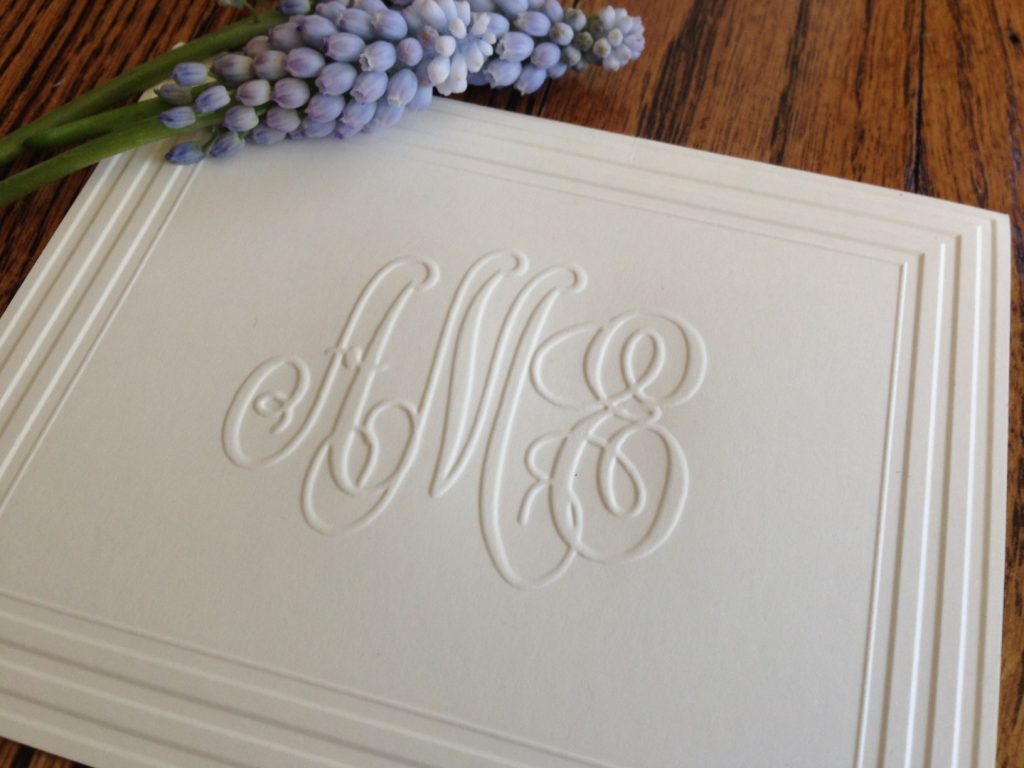
Superior Embossing
Embossing makes stationery special. With ordinary stationery, the ink is applied to the surface of the paper, and you can’t really see or feel a difference in the texture of the printing versus the paper. Embossing is different. In fact, embossing is a symbol of traditional style. This process has been around for hundreds of years. With embossing, paper is squeezed between two molds, or dies, to create a raised impression on the paper.
On very good embossing, the edges of the letters are crisp. It’s important to get those sharp edges because it uses no ink: The embossing creates the letters. Our Embossed Graphics craftspeople double-inspect every piece of stationery to be sure it meets our standards for top-notch embossing. How can you tell high-quality embossing?
- On the front of the paper, the edges should be crisp. This crisp quality is harder to achieve with thicker paper, but is well worth the effort. We mainly use double- and triple-thick paper on our stationery, and it shows. The difference between the field of paper and the lettering is wonderfully substantial.
- On the back of the paper, you should see a deep textural change in the embossed area. The paper should have been squeezed up and into the embossed pattern or lettering. If you see and feel just a shallow impression, then the embossing is inferior.
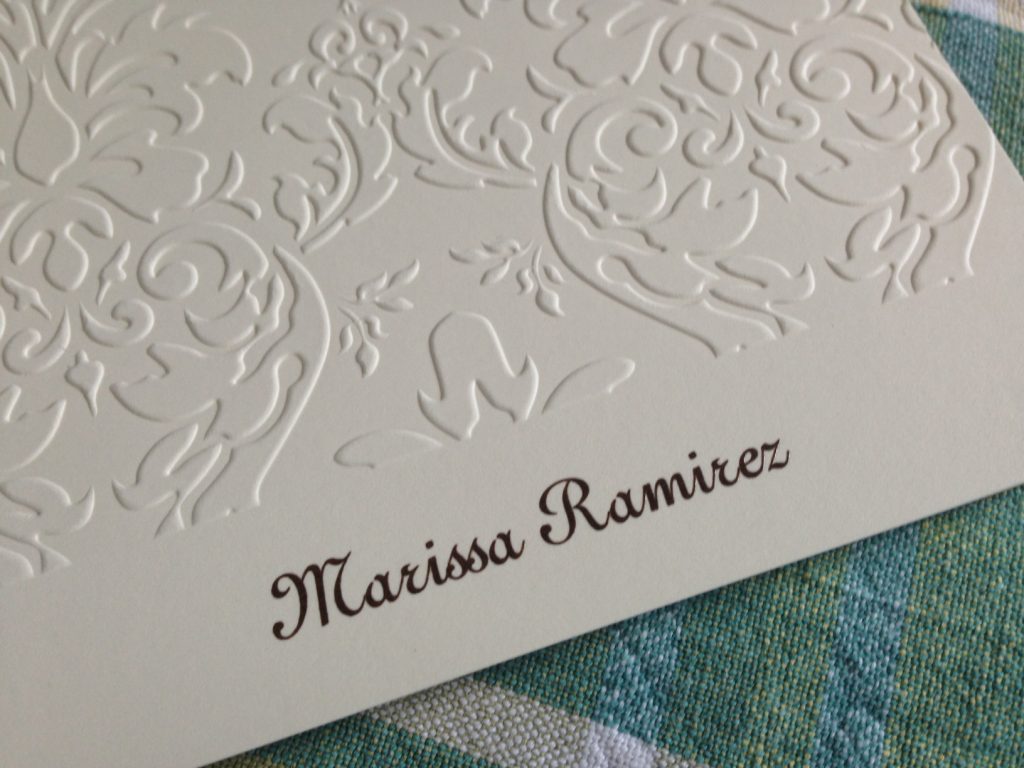
Embossed Graphics, has been embossing stationery since the 1970s. Needless to say, we have perfected our technique over the last 50 years.
Textural Thermography
Whereas embossing pushes the paper up to create a wonderful texture, thermography builds texture with a special type of ink. Also called “Raised-Ink,” thermography results in a shiny and raised style of printing. Unlike with embossing, when you look at the back of the paper, it is smooth. Unlike with flat printing, when you run your fingers over it, you can feel the texture of the thermography.
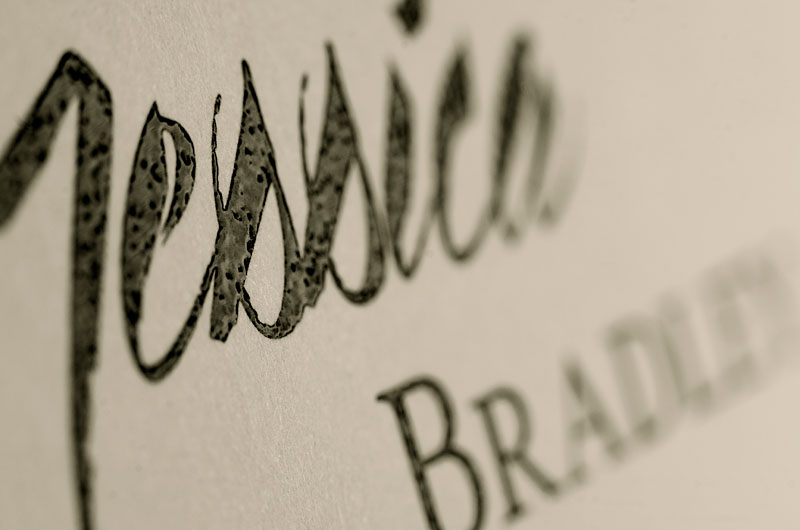
Raised-ink printing is an affordable version of engraving, a centuries-old printing method. With the traditional method of engraving, the printer must create a set of dies, which are expensive to produce. So expensive, in fact, that they reside at the stationery company until you require more stationery.
With thermography, we print your name or monogram onto the paper first. While the image is still wet, we spread a colored powder onto it. Then we apply high heat to the name or monogram for a few seconds. The ink and powder bonds to form a textural, slightly shimmery raised image.
You can see examples of our Raised-Ink Cards and Embossed Notes. Please visit your nearest Embossed Graphics retailer to see beautiful examples of our stationery in person. They can walk you through the differences and show you the best-selling designs. Support our retailers! They contribute to the character and friendliness of your community and provide tax revenue to keep your municipality running.

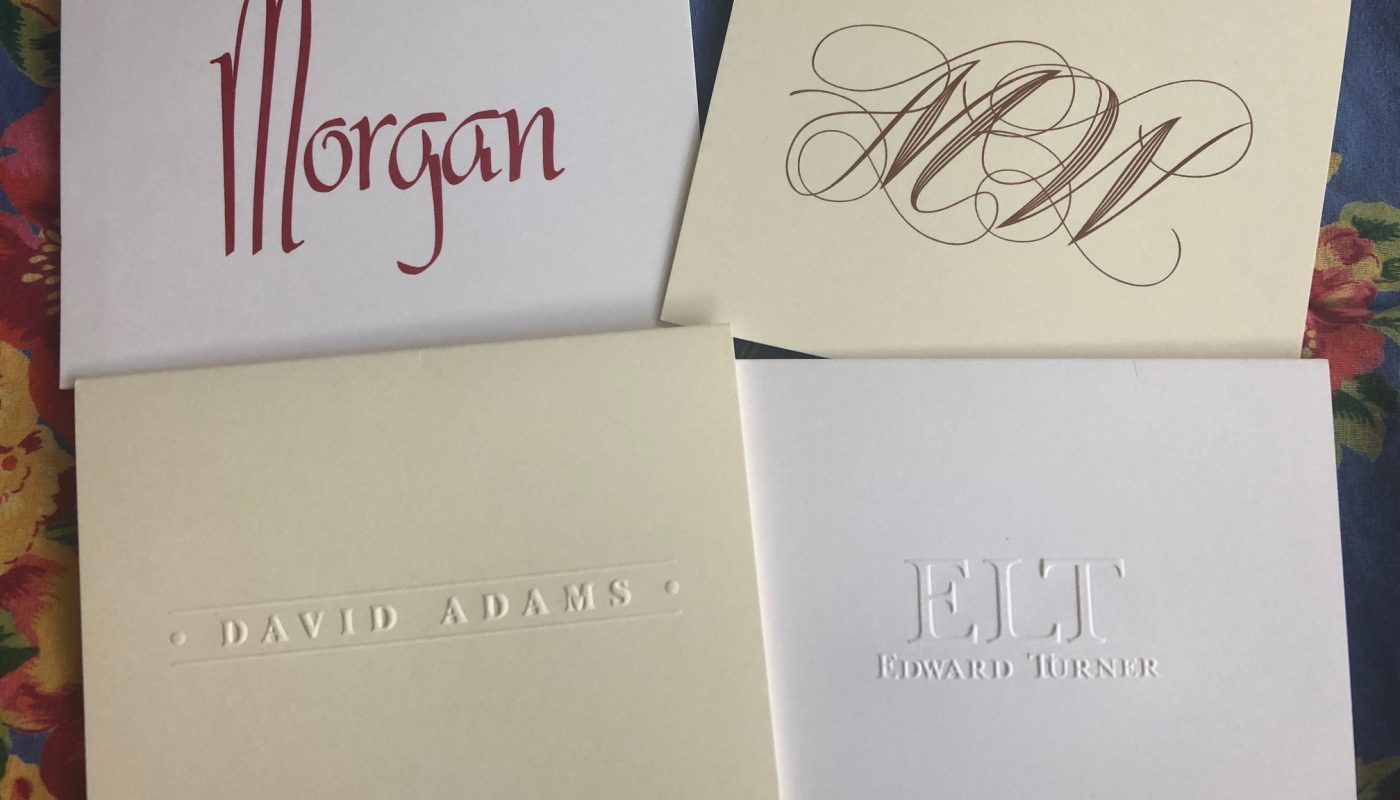

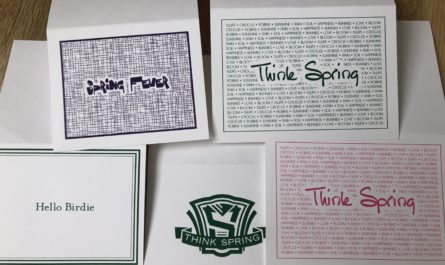
I have a customer looking for hi-end theromographed, and foil embossed, specific pantones… is that something you’re able to do? They would like a PMS 331 “Hot Foil” they are using a designer out of Italy. Right now she’s looking for business cards and some other hi end compressed “boards”…. think of a menu cover…
Thoughts?
Hi Tara, Thanks so much for your inquiry! I have referred your question to the head of our shop. We do have some products that can be customized with a logo and we just launched a line of business cards. We do have gold and silver thermography as well as gold and silver foil embossing, but I’m not sure about customized colors. I’ll keep you posted. Thank you!